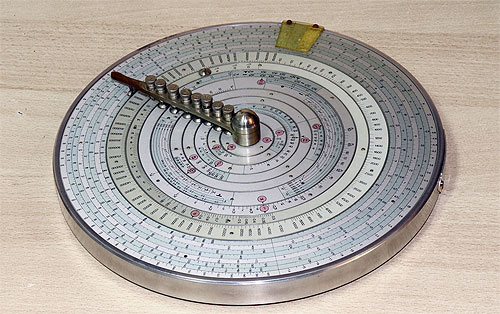Here is one impressive calculating device: Washington Sabatini’s reinforced concrete calculator.

This complicated circular slide rule is one of the largest items in my collection. It comprises ten concentric aluminum rings covered with complicated scales and pointers. The rings are all movable except for the second largest; that one is fixed to the body of the device, as is the celluloid cursor overhanging the largest ring. The movable rings are rotated around the center of the device by use of the prominent crank handle that spans its radius.
For full details, and a worked out example of how to calculate the dimensions of a concrete beam under specified parameters, see this article on my History of Computing site.
Enjoy!



